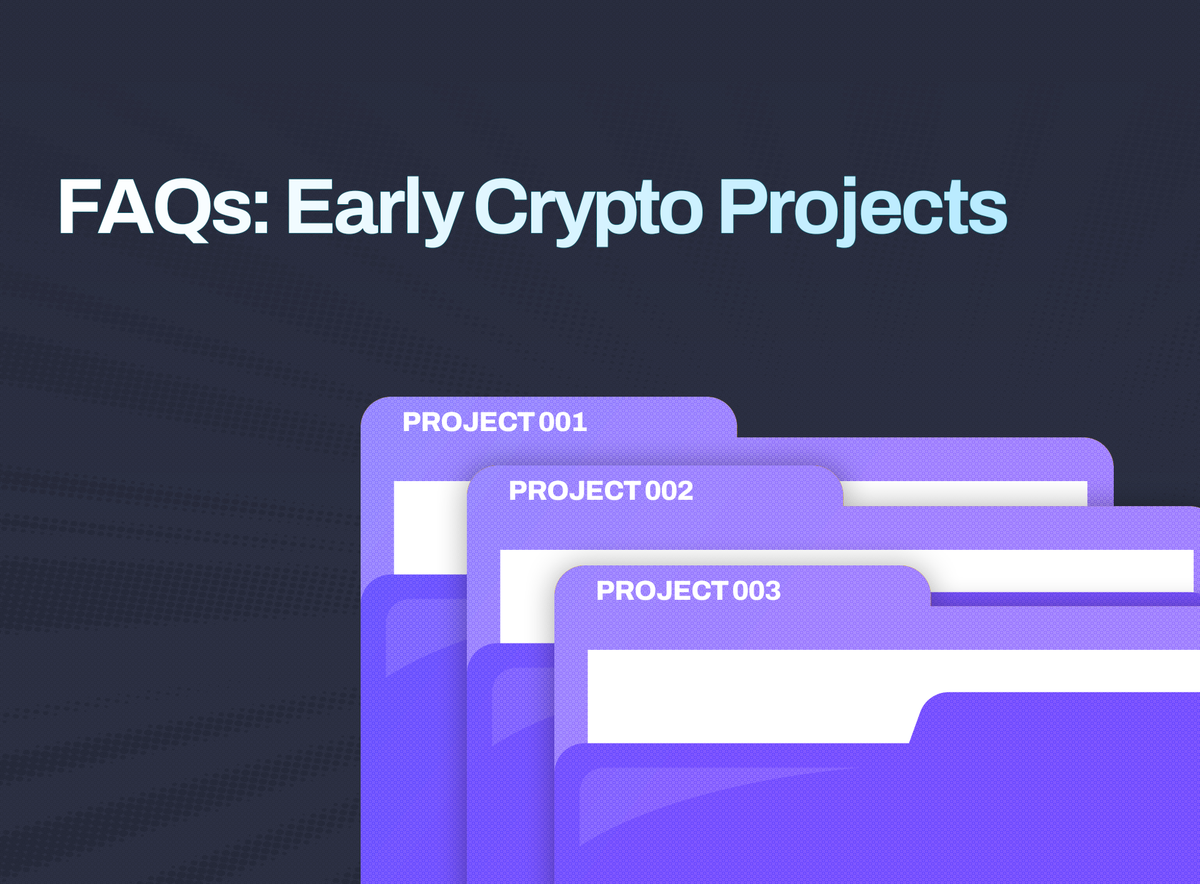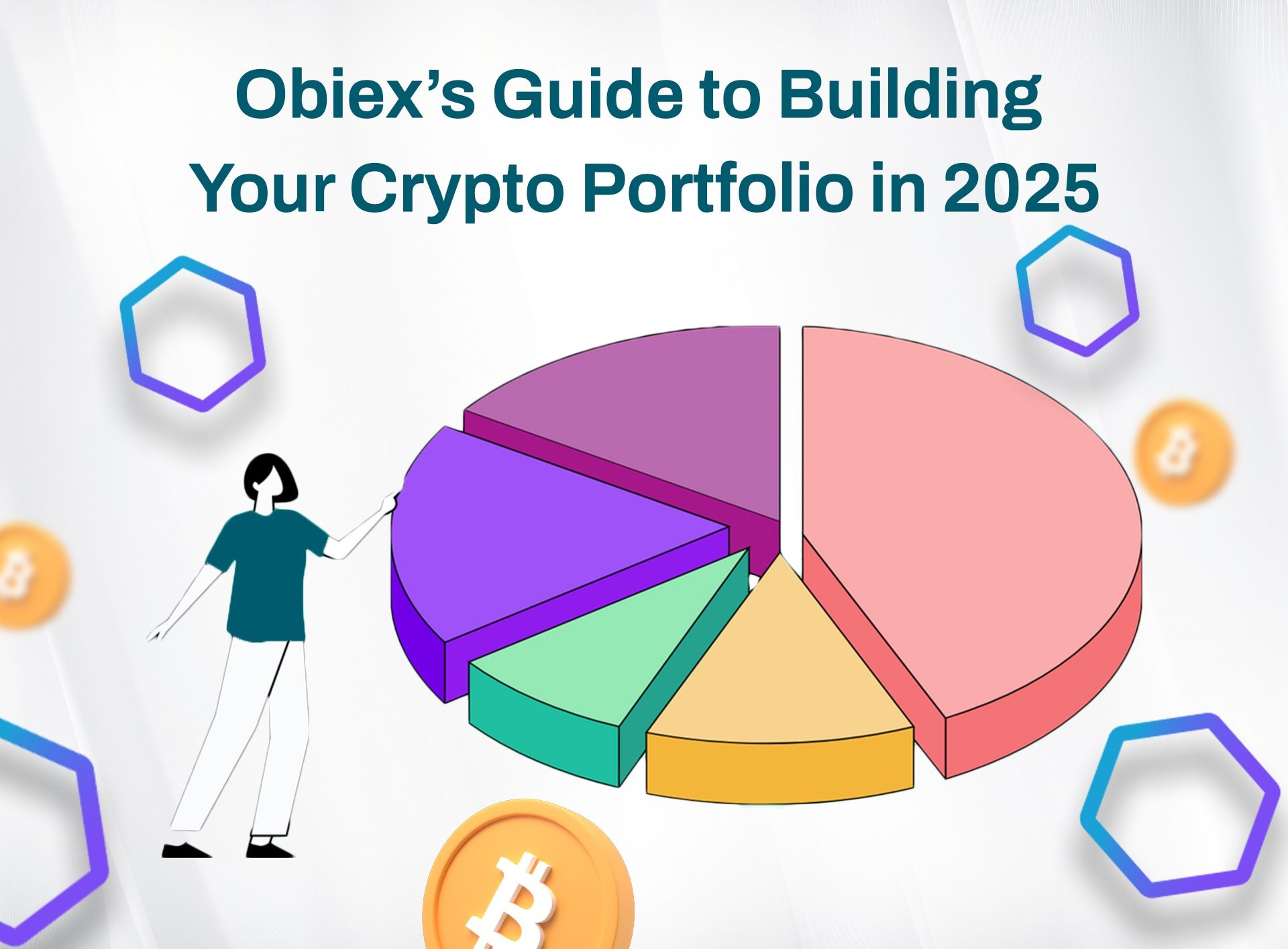FAQs About Early Crypto Projects Every Trader Should Ask
Is that new crypto project worth your money? Here are important FAQs you should ask and know before investing in crypto projects

1. How do I know if a new crypto project is legit or a scam?
Legit projects usually have transparent teams, locked liquidity, audited smart contracts, and a clear roadmap. Scams often hide founders, use copy-paste whitepapers, and promise unrealistic returns. Always check for audits, community engagement, and whether the team has a track record in crypto.
2. What are the red flags to watch out for in early crypto projects?
Biggest red flags include:
- No team transparency (anonymous founders with no credibility).
- Unrealistic tokenomics (huge insider allocation, no vesting).
- Vague roadmap full of “coming soon” promises.
- No audit or shady contract functions (like mint/burn without control).
- Overhyped community growth with bots and fake followers.
3. How do tokenomics affect the value of a new cryptocurrency?
Tokenomics determine how supply and demand balance out. If a project gives too many tokens to insiders, expect early dumps. On the flip side, fair distribution, utility-driven demand, and deflationary mechanisms (burns, staking rewards) can help price stability and long-term growth.
4. What does it mean when liquidity is “locked” in a crypto project?
“Locked liquidity” means the project’s token/ETH (or token/USDT) pool on a DEX is secured for a fixed period. This prevents the team from pulling liquidity and rug-pulling investors. Always verify the lock on platforms like Uncx or Team Finance before investing.
5. How do I research the team behind a new crypto coin?
Start with LinkedIn, GitHub, and Twitter. Check if they’ve worked on past blockchain or fintech projects. See if they’ve had previous successes (or rug pulls). If the team is fully anonymous, weigh the risk carefully. Legit projects often have publicly known advisors and partnerships to build credibility.
6. Are anonymous crypto founders always a bad sign?
Not always. Bitcoin’s founder, Satoshi, is anonymous. But in today’s market, anonymity makes it harder to trust. If founders stay hidden, make sure the project has audits, locked liquidity, and trusted partners. An anonymous team with no safety nets is a major risk.
7. What is vesting in crypto, and why does it matter for early projects?
Vesting means insiders (team, advisors, private investors) can’t dump their tokens all at once. Instead, tokens unlock gradually. Without vesting, insiders can crash the price immediately after launch. Look for projects with 6–24 month vesting schedules for insider allocations.
8. How can I check if a crypto project has been audited?
Reputable projects publish audit reports from firms like Hacken or Quantstamp. These reports are usually on the project’s website or GitHub. Be cautious of fake audits and always cross-check on the auditor’s official site.
9. What happens if insiders dump their tokens after launch?
When insiders sell huge amounts, the token price can collapse overnight. This is why vesting and lock-ups matter. A project without them is high-risk, since early investors can exit with massive profits while retail holders get wrecked.
10. Which blockchain is best for launching new crypto tokens?
It depends:
- Ethereum: Most secure, biggest ecosystem, but gas fees are high.
- BNB Chain: Lower fees, faster transactions, popular for new tokens.
- Solana, Avalanche, Base: Cheaper, scalable, and gaining traction.
- Polygon: Great for gaming and DeFi.
💡Choose projects that pick blockchains aligning with their actual utility, not just hype.
11. How do I find out if a new crypto project will list on Binance, Coinbase, or other exchanges?
Projects usually announce listings via press releases or official social media. But beware of fake “Binance listing soon” claims. Check directly on the exchange’s official announcements page. If it’s not there, it’s not confirmed.
12. Why do so many new crypto projects fail after launch?
Most fail because they:
- Run out of funding.
- Have weak utility (no real use case).
- Depend only on hype and meme marketing.
- Face rug pulls or mismanagement.
- Cannot compete with stronger projects.
Only a small percentage of early projects survive beyond 2–3 years.
13. How can I tell if a crypto project’s community is real or full of bots?
Look beyond follower count for signs of real engagement, such as:
- Active discussions in Telegram/Discord.
- Questions being answered by admins.
- Organic growth (not sudden 50k members overnight).
- Meaningful conversations. Fake communities usually spam “When moon?” or emojis with barely any valuable discussions.
14. What questions should I ask before investing in an early-stage cryptocurrency?
Here are some starter questions to ask:
- Who is the team, and what’s their track record?
- Is liquidity locked?
- What’s the tokenomics breakdown?
- Has the contract been audited?
- Does the token have real-world utility?
15. How do early crypto investors spot 100x projects?
They look for:
- Strong, experienced team.
- Clear utility + growing niche demand.
- Tokenomics that favour holders.
- Early partnerships or VC backing.
- Active communities with organic traction.
💡Spotting 100x gems is rare. It’s a mix of research, timing, and luck.
16. What is a presale in crypto, and is it safe to join?
A presale lets early investors buy tokens before public launch, often at cheaper prices. The risk of joining a presale is that many presales never deliver.
Only join if:
- The team is verified.
- Liquidity will be locked.
- There’s an actual roadmap.
17. How do I read and understand a crypto project’s whitepaper?
Focus on:
- Problem statement: Is it solving something real?
- Tokenomics: How tokens are distributed.
- Roadmap: Are goals realistic?
- Team: Backgrounds and credibility.
💡Tip -Always ask: Does this whitepaper actually explain utility, or is it just marketing jargon?
18. What is the difference between an ICO, IDO, and IEO?
- ICO (Initial Coin Offering): Tokens sold directly on the project’s site.
- IEO (Initial Exchange Offering): Tokens launched via an exchange like Binance.
- IDO (Initial DEX Offering): Tokens launched on a decentralised exchange (Uniswap, PancakeSwap).
💡ICOs are riskiest, IDOs are fast-moving, and IEOs usually have higher trust because exchanges vet projects.
19. How do I track the roadmap progress of a new crypto project?
Check:
- Official website/blog updates.
- GitHub commits (if open-source).
- Community AMAs.
- Partnership announcements.
Please note: If months go by with zero updates, that’s usually a bad sign.
20. Are early crypto projects worth the risk compared to established coins?
It depends on your risk appetite. Early projects offer high upside (10x–100x) but come with extreme risk of rug pulls or failure. Established coins like Bitcoin and Ethereum are safer but have lower upside. A balanced portfolio usually mixes both.
Here's your guide to building a balanced crypto portfolio:

Disclaimer: This article was written to provide guidance and understanding. It is not an exhaustive article and should not be taken as financial advice. Obiex will not be held liable for your investment decisions.

